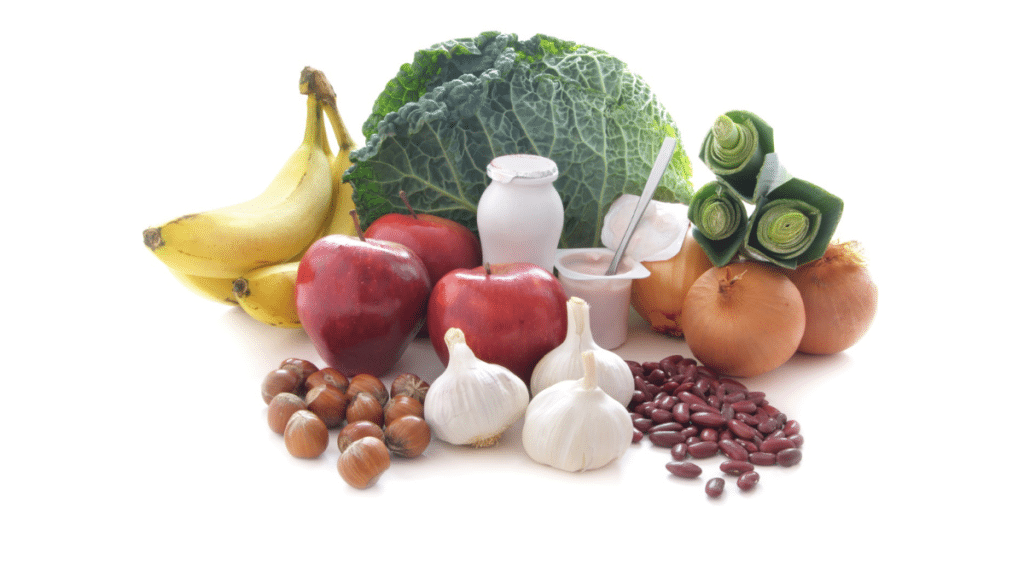Good living bacteria and yeasts that naturally exist in your body are used to make probiotics. Both beneficial and harmful bacteria are always present in your body. When you get infected, more harmful germs enter your body, which throws your system out of equilibrium. By removing other harmful bacteria, good bacteria help restore stability. Adding beneficial microorganisms to your body may be done by taking probiotic supplements Australia.
What Are Probiotics?
As explained, probiotics are living microbes that, when consumed in sufficient quantities, may help your health. They may be created and cultivated in a lab and added to pills, powders, or other items. Additionally, certain fermented foods and beverages naturally contain them. Probiotics work as peacekeepers in your gut, helping to maintain order and keep everything running smoothly. Further, researchers are discovering a potential new strategy for maintaining human health by modifying the balance of intestinal bacteria using probiotics.
Why Do You Need Prebiotics, Postbiotics, and Probiotics for Better Health?
Now that we’ve covered the basics, let’s go through why prebiotics, probiotics, and postbiotics are essential for excellent health and how to get them.
Probiotics
Bifidobacteria and lactobacillus are two types of probiotics that are often used, whereas lactococcus, streptococcus, and enterococcus are less frequently used. The beneficial yeast strain Saccharomyces is usually included in probiotics supplements.
Probiotic pills and meals with added probiotics often include the following strains:
- L. acidophilus
- L. casei
- L. gasseri
- L. plantarum
- L. reuteri
- L. rhamnosus
- B. bifidum
- B. breve
- B. infantis
- B. longum
- Lactococcus lactis
- Streptococcus thermophilus
- Saccharomyces cerevisiae (boulardii)
Probiotic Food
These are known as fermented foods, and they may consist of:
- Kombucha
- Raw cheese
- Miso
- Tempeh
- Yogurt
- Kefir
- Kimchi
- Sourdough
- Sauerkraut
Postbiotics
Postbiotics are the newest kid on the block. Exopolysaccharides (EPS), enzymes, short-chain fatty acids (SCFAs), vitamins, aromatic amino acids, and other substances are examples of postbiotics.
Postbiotic Food
You may get certain postbiotics from your foods, like prebiotics and probiotics. Few foods contain postbiotics (SCFAs), but numerous foods serve as the energy source for probiotics to make postbiotics, particularly SCFAs.
Postbiotic foods include:
- Dairy products, such as cheese and butter, include postbiotics.
- cooled-off cooked oats
- Finished and cooled rice
- Finished and cooled potatoes
- Legumes
- very green or under ripe bananas
- Onions
- Asparagus
Prebiotics
Prebiotics are mostly plant foods rich in fibre. We cannot digest these meals due to their high fibre content, but probiotics can. This is why you should understand when someone tells you to increase your fibre intake. You provide fibre to your probiotics, and they produce postbiotics that are good for your health. Let’s look at a few prebiotic foods you may frequently include in your diet.
Prebiotic Food
Delicious and wholesome prebiotic meals consist of:
- Dandelion greens
- Garlic
- Mushrooms
- Oats
- Onions
- Whole grains.
- Apples
- Almonds
- Artichoke
- Barley
- Beets
- Beans
- Broccoli
- Chicory root
How Do Probiotics Function?
Maintaining a healthy equilibrium in your body is the primary function of probiotics, often known as beneficial bacteria. Imagine doing that while maintaining bodily neutrality. Harmful bacteria enter your body and multiply while you are ill. Your body becomes out of balance as a result. You feel better because the good bacteria are working to fend off the harmful bacteria and restore balance in your body.
Healthy bacteria help your immune system work properly and reduce inflammation, which keeps you healthy. Some varieties of beneficial bacteria may also:
- Aiding in food digestion.
- Avoid being ill by preventing harmful germs from spreading out of control.
- Construct vitamins.
- Support the gut’s lining cells to stop harmful germs from entering your blood that you may have ingested via food or drink.
- Drug breakdown and absorption.
Your body constantly engages in this balancing task on its own. To do this, you don’t need to take probiotic pills. Your body naturally contains good bacteria. Everyday consumption of a fibre-rich, well-balanced diet contributes to maintaining healthy levels of beneficial bacteria.
Do Probiotics Have Any Negative Effects?
Based on the strain and how you react to it, probiotics may cause more gas, bloating, or a change in how often you go to the bathroom.
Probiotics are generally safe to consume, but if you have a digestive condition like celiac disease, see your doctor first. If you have a food or medication allergy, read the ingredient list to reduce your chance of experiencing an adverse reaction.
Where Do Healthy Probiotics (Microbes) Reside in the Body?
You have various places in and on your body that contain healthy microorganisms, even though the region is most often associated with beneficial microbes in your gut (mainly the large intestines). You’re in touch with the “outside world” at these places, which also include:
- Urinary tract.
- Skin.
- Lungs.
- Gut.
- Mouth.
- Vagina
Prebiotics and Probiotics: Are They the Same Thing?
Prebiotics and probiotics are not the same thing. Prebiotics are inedible dietary ingredients that specifically promote the development or activity of advantageous microbes.
When choosing probiotic supplements, look for bacteria strains and accessories targeting your health concerns. Additionally, be sure that research and testing have been done to support the product you purchase.Probiotics are good bacteria that may enhance the condition of the gut flora. They may be obtained as supplements or in a variety of meals. To ensure your safety, talk to a doctor before using probiotic supplements or increasing your probiotic consumption.


